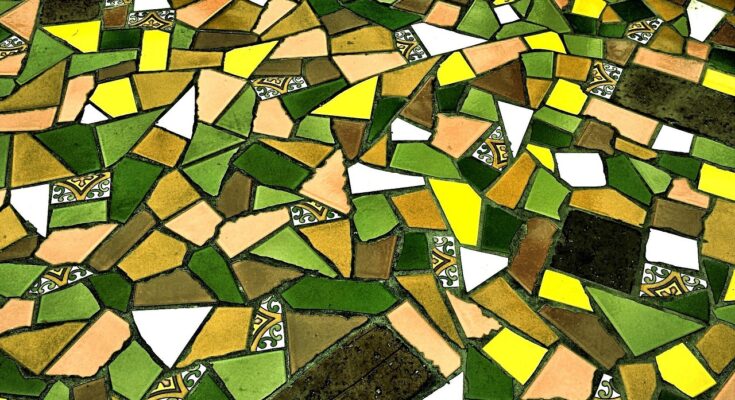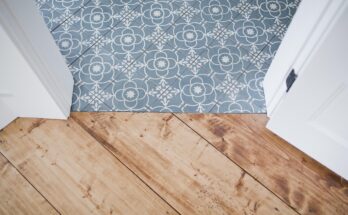ZonaJakarta – Ceramic flooring has long been a favorite in homes, restaurants, and commercial spaces for good reason. It’s tough, water-resistant, stylish, and comes in a huge range of colors, patterns, and textures. From a classic white tile kitchen to a rustic terracotta patio, ceramic holds up where other materials might crack—literally.
But while ceramic tile is famously durable, it’s not completely maintenance-free. Dirt, stains, grout grime, and even hairline cracks can creep up if you’re not paying attention. The good news? With just a bit of consistent care, ceramic flooring can stay crisp, clean, and virtually ageless.
Here’s a full breakdown of what it really takes to maintain ceramic tile floors without turning your weekends into chore marathons.
Sweep First, Always
Dust might not seem like a threat to a tile floor, but if it builds up, it can act like a thin layer of sandpaper. That constant friction—especially in high-traffic areas like entryways or hallways—can dull the glazed surface over time.
Make it a habit to sweep or vacuum your ceramic floors regularly. A soft-bristle broom works well for daily dust, but if you’re using a vacuum, make sure it’s set to a hard floor setting to avoid scratching. A microfiber dust mop is also a great option—it collects fine particles without scattering them around.
In homes with pets or kids, sweeping every day or every other day keeps everything under control. For lower-traffic rooms, a couple of times a week should do the trick.
Mop With Warm Water and a Gentle Cleaner
Ceramic is pretty forgiving when it comes to cleaning solutions, but that doesn’t mean you should dump a bucket of soap onto it. For day-to-day mopping, warm water is often enough to lift up dirt and keep the surface looking polished. If you want a deeper clean, use a pH-neutral cleaner designed for tile.
Skip anything with harsh acids, bleach, or ammonia. Those might cut through grime fast, but they can also break down the glaze on your tiles or discolor the grout lines. Also avoid oil-based cleaners, which can leave behind a slick residue and make the surface slippery.
Use a damp (not soaking) mop and make sure to rinse it often. After mopping, go over the floor with a dry towel or microfiber pad to catch leftover moisture—this helps prevent streaks and keeps the tile shining.
Pay Attention to the Grout
Here’s the thing about ceramic tile: the tiles themselves are easy to clean, but the grout between them? That’s where the real challenge lies.
Grout is porous, which means it absorbs liquids, dirt, and stains like a sponge. Over time, it can turn dark, dingy, or even moldy if you’re not on top of it. To avoid that, give your grout a little love on a regular basis.
A weekly wipe-down with a damp cloth can help prevent buildup. For deeper cleaning, use a grout cleaner and a soft brush—an old toothbrush works great. Scrub gently in a circular motion, then wipe the area clean with water.
If you notice your grout isn’t repelling moisture the way it used to, it might be time to reseal it. Grout sealer acts like a barrier, protecting it from future stains and spills. Depending on the type, you may need to reseal once a year or every couple of years.
Wipe Up Spills—Even on a Tough Surface
Ceramic tile is water-resistant, so it’s tempting to ignore small spills. But while the tile itself won’t soak up moisture, the grout lines will. Letting spills sit too long—especially sticky ones like juice or oily substances—can lead to stained grout and leave behind residue that dulls the floor over time.
The rule is simple: wipe up anything you spill, as soon as you see it. Use a soft cloth or paper towel to blot the area, then follow with a damp wipe if needed. It takes less than a minute and helps your floor stay cleaner for longer.
Prevent Scratches and Chips
Ceramic tile is hard, but it’s not bulletproof. Dragging furniture across the surface or dropping something heavy can cause chips or cracks—especially on corners or along edges.
To avoid that, always use felt pads under furniture legs. In high-traffic areas, consider adding rugs or mats—especially under dining tables or next to counters where things might fall. And if you’re moving furniture, lift it instead of dragging.
If a tile does get chipped or cracked, it can usually be replaced individually without tearing up the entire floor. Just make sure you keep a few extra tiles from your original installation in case of emergency.
Watch for Mold in Moist Areas
Ceramic is often found in bathrooms and kitchens—places that deal with humidity, steam, and water on the regular. And while the tile can handle it, the space between the tiles can become a breeding ground for mold or mildew if it stays damp too long.
Use a fan or open a window to keep air circulating in humid areas. Dry the floor after showers or cooking sprees, especially around corners, tubs, or sinks. If you see mold starting to form, clean it with a mild solution of vinegar and water or a commercial mold remover approved for tile use.
Seasonal Deep Cleaning Pays Off
Even with good habits, ceramic tile floors benefit from a more thorough clean every few months. Move furniture if possible and clean underneath. Use a tile-safe cleaning solution to mop every inch, focusing on corners and along baseboards. You’d be surprised how much grime settles in those overlooked areas.
This is also a good time to inspect for any loose tiles, worn grout, or signs of water damage. Catching problems early means less cost—and less mess—later on.
Final Thought: Easy to Maintain, Built to Last
Ceramic tile has earned its reputation as one of the most low-maintenance, long-lasting flooring choices out there. It stands up to daily life, messy kids, heavy foot traffic, and everything in between. But like anything else in your home, it performs best with a little attention.
By keeping it clean, protecting the grout, and dealing with issues before they escalate, your ceramic flooring can easily last decades—still looking just as good as it did the day it was installed. It’s not high-maintenance, but it is worth the small effort. And the payoff? A space that feels clean, classic, and put together every time you walk in. (*)




